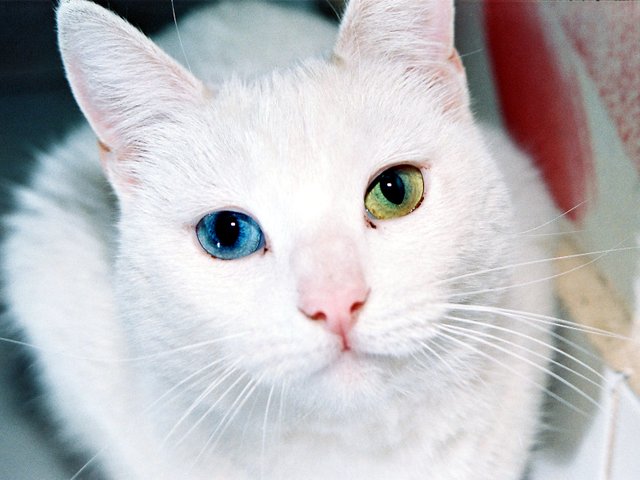Heterochromia - Two Different Colored Eyes
The vast majority of the world is homo...chromic. People like me are Heterochromic, and there are three types of us.
- Those with Central Heterochromia exhibit a different color closer to the center of the iris that changes toward to the outer iris.

- Sectoral Heterochromia is when a person has a splash of different color somewhere randomly in the iris. This can affect one or both eyes.

- Complete Heterochromia is a (mostly) complete difference of iris color.
I'm somewhere between sectoral and complete:

My particular variety isn't very noticeable in anything but natural sunlight. Even here in the bright lights of my village-class kitchen, it's hard to see. But I've been stopped outside on the streets by strangers who remark how much I remind them of their husky or cat, it's real. And it's flattering, really. really.
Heterochromia can be genetic or acquired. Eye injuries are among the most popular reasons for the change in melanin within an iris, with certain medications also causing the effect.
Other causes include:
- Bleeding (hemorrhage)
- Familial heterochromia
- Foreign object in the eye
- Glaucoma, or some medicines used to treat it
- Injury
- Mild inflammation affecting only 1 eye
- Neurofibromatosis
- Waardenburg syndrome
Notable people with Heterochromia
David Bowie
People usually point to David Bowie's eyes as an example of Heterochromia, but that's actually not true. He has a condition called Anisocoria, which developed after being punched in the eye. One of his pupils stays more dilated, so less of the iris is visible and appears a bit darker.

Alexander the Great
When you have different colored eyes, you kind of are in the know about who else has them. Did you know Alexander the Great had Complete Heterochromia?

Henry Cavill
The man of Steel has a particularly striking type of Sectoral Heterochromia that paints one of his blue eyes with a splash of brown. It is also the probable source of his otherworldly power, at least in dating.

Huskies
To be fair, there are a number of dogs and cats that have Complete Heterochromia but it's always the Husky that I'm compared to, so here's a cute picture of a Husky for comparison purposes.

Rare?
The types of Heterochromia are not set in stone, and a combination between them is much more common than you might think. According to the American Academy of Ophthalmology, this birth abnormality happens to about 6 in 1000 people. Complete Heterochromia is still the rarest form, however.
You should check your eyes if you haven't really looked before. The chances are that you have some pretty colors hiding in there. If you do, welcome to the beautiful mutation club!
You look just like my cat!



It's splendid that you can be compared to both a dog or a cat!
Honestly, it's better than being told you remind them of their donkey or tarantula